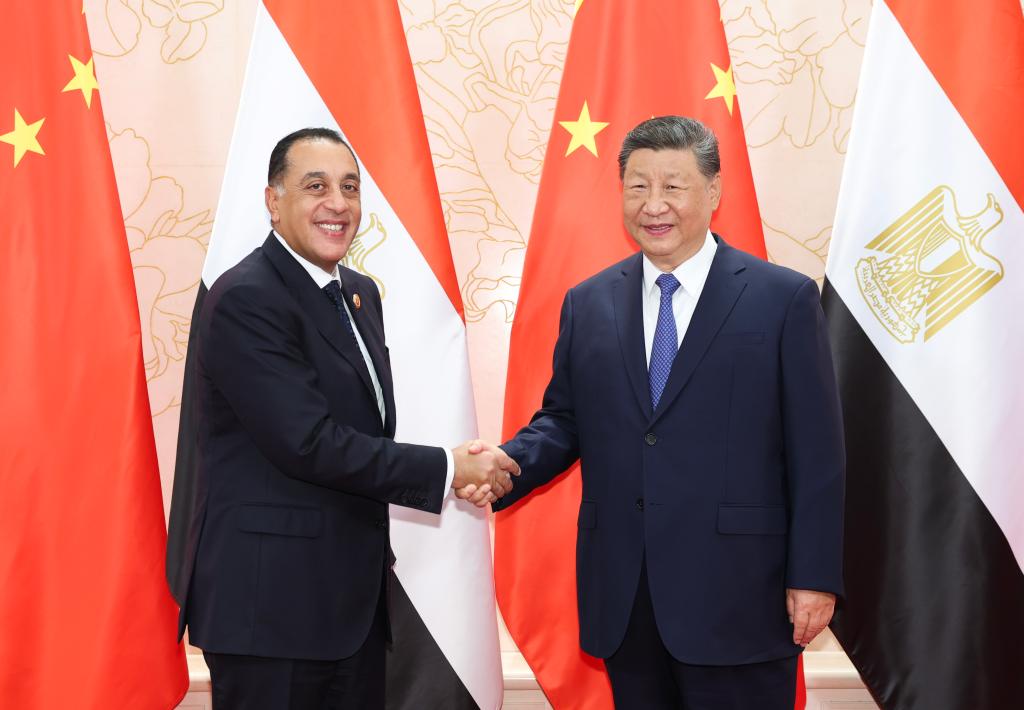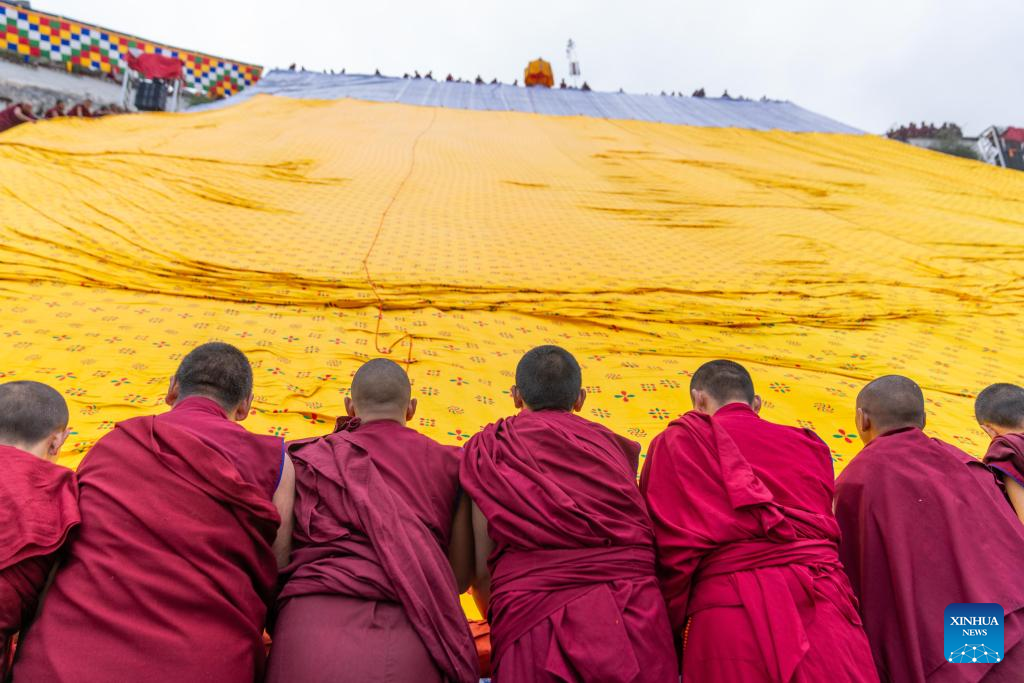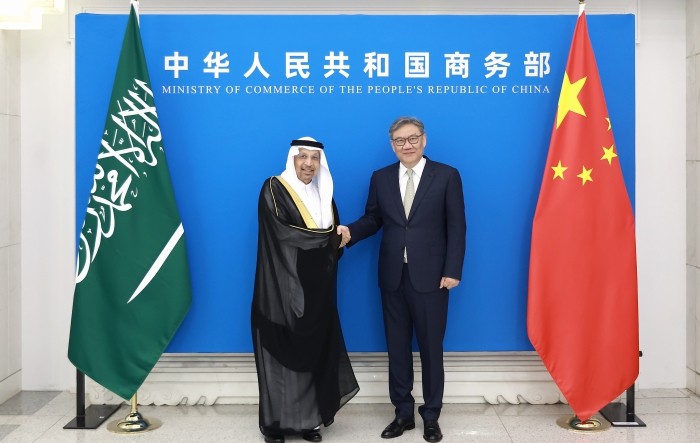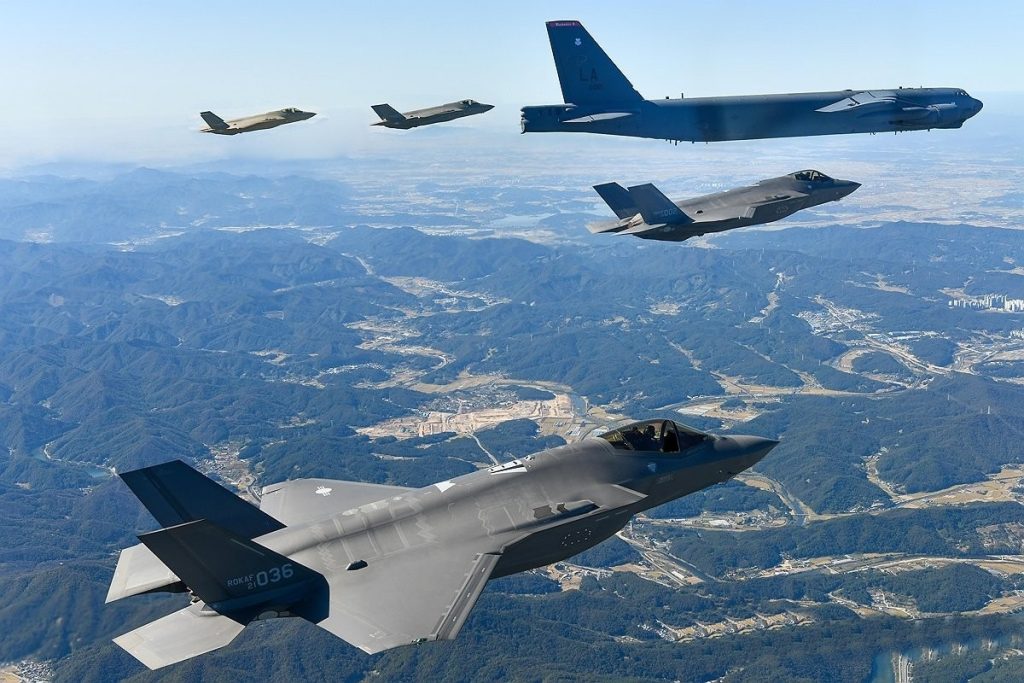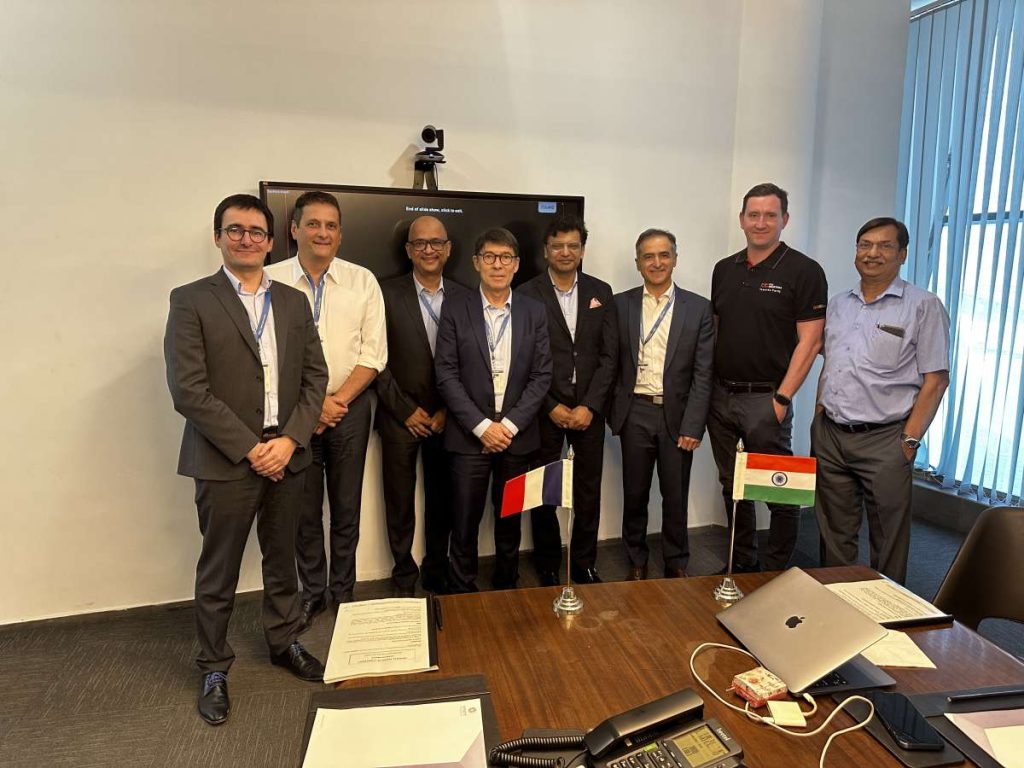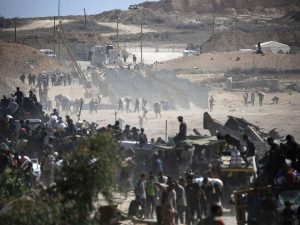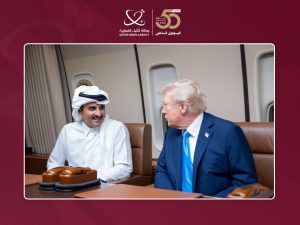China showcased its strong influence in the Thai market at the Defence and Security 2023 exhibition in Bangkok from November 6-9. Major state-run entities like Norinco, AVIC, CETC, CSSC, and Poly Technologies played a prominent role, occupying a substantial portion of the exhibition space….reports Asian Lite News
In recent years, Thailand’s government and armed forces have courted China, with close links forged through equipment acquisitions, research and development projects, and bilateral training. However, these warming ties come at a price both financially and diplomatically, as others like the US have grown alarmed at Thai agnosticism over China’s strategic threat.
Thailand was designated a Major Non-NATO Ally by the US in 2003, but bilateral ties have gone up and down due to military coup d’etats in the kingdom in 2006 and 2014. Washington DC knows that if it completely freezes Thailand out, then the latter will increasingly succumb to China’s embrace. Nonetheless, Beijing has made continuous and heady progress in equipping the Thai armed forces.
Indeed, China’s strong presence in the Thai market was illustrated by its participation in the recently concluded Defence and Security 2023 defence exhibition in Bangkok, held from November 6-9. Large state-run entities such as Norinco, AVIC, CETC, CSSC and Poly Technologies were out in force, accounting for a significant proportion of the show’s floor space.
The China State Shipbuilding Corporation (CSSC) showed a wide range of ship models on its large booth. One was the S26T diesel-electric submarine that the Royal Thai Navy (RTN) is supposed to be buying. However, Bangkok recently suspended plans to procure this THB13.5 billion (USD430 million) submarine from China. This was due to Germany’s refusal to supply diesel engines to CSSC for the boat, as Berlin belatedly tightened export controls after the Ukraine war erupted.
China subsequently convinced the RTN that it could install Chinese-made CHD620 diesel engines instead. However, Thailand’s hesitation to agree stemmed from the fact that not even People’s Liberation Army Navy (PLAN) submarines have hitherto used the CHD620. The retiring RTN chief, Admiral Choeingchai Chomchoengpaet, said in September that he had approved the engine change after China offered an eight-year warranty and military certification. However, the newly installed Thai government overruled the RTN’s recommendations and demanded an alternative plan.
Thus, on October 20, Thai Defence Minister Sutin Klungsang announced a decision to use the submarine budget for an anti-submarine warfare frigate, or perhaps a couple of offshore patrol vessels, instead. The minister stated: “The submarine project is not scrapped but will be shelved for a certain period. … It will resume when the country is ready.” Sutin noted that Sino-Thai strategic cooperation was too important for the sale to be scuttled completely, and that purchasing a frigate from Beijing was “the best way out”.
However, the proposed frigate will likely cost more than the submarine’s price tag. The other, perhaps more serious issue, is that any frigate would have all Chinese systems and weapons that largely do not interoperate with existing equipment in the Thai armed forces. More than 50 per cent of the 1,850-tonne S26T had been completed, after steel was first cut on September 4, 2018.
When ANI asked CSSC about the status of the S26T program back in May, a representative said it was going “very well”. Quite apart from demonstrating that Chinese defense industry representatives are inherently dishonest, this whole submarine saga is a huge embarrassment for China. It will surely cause potential submarine buyers to think twice before ordering from China, for nowadays there can be no mixing of Western and Chinese components in complex weapons such as submarines.
Speaking of which, Thailand opted for a very expensive and technically risky course of action when it bought a Chinese-built Type 071E landing platform dock (LPD) ship from CSSC. Commissioned into the RTN on 25 April this year, HTMS Chang was delivered without important combat systems such as weapons or a combat management system. Instead, the RTN will issue a tender soon to install Western systems into the 20,000-tonne LPD. This is an inordinately expensive way to obtain a new ship, and it will take a long time to get it fully operational. Unfortunately, this is the kind of head-scratching decisions that the Thai military tends to make, perhaps lured by Chinese promises of speedy delivery of kit.
Elsewhere, Chinese land equipment specialist Norinco has done particularly well in Thailand. It recently completed delivery of VT4 main battle tanks to the Royal Thai Army (RTA), of which Thailand was the first export customer. Bangkok ordered 60 of these tanks in several batches since 2016, with the final batch of VT4s delivered in October. The RTA still needs at least 100 additional tanks to replace ageing American-manufactured M41 and M60 models. The RTA also purchased some 111 VN1 8×8 armoured vehicles from Norinco, with these all delivered. Norinco was supposed to establish a regional hub in Thailand for repair and maintenance of Chinese vehicles, but for some unknown reason this has not occurred.
Then, on September 11, the Thai Ministry of Finance announced that Norinco had been declared the winner of a USD5.28 million competitive tender to supply four Sky Saker FX80 unmanned aerial vehicles (UAV) and a ground control station to the Thai army. The RTA will use them for target acquisition batteries of field artillery units, and the aircraft’s sensors include a laser designator. Norinco had an example of this UAV on display at Defense & Security 2023.

As just alluded to, UAVs are proving a fruitful area of cooperation between China and Thailand. This was underscored by Aero Technology Industry Company Limited (ATIL) exhibiting at Defense & Security 2023 in Bangkok. This “Thai” company remains somewhat mysterious, with two joint venture partners being Thailand’s Ministry of Defence-affiliated Defence Technology Institute (DTI), with a 25 per cent stake, and PYN International Co. Ltd., a Thai-based defense solutions provider. A third financial backer is a Chinese company whose name ATIL refuses to divulge. By examining the UAVs available in ATIL’s catalog, it is evident that Beihang UAS Technology from China was initially that secretive partner. However, an ATIL spokesperson told ANI that this is no longer the case. Instead, ANI surmises that ATIL’s silent partner is now Norinco, after the Chinese conglomerate forged a strategic cooperation agreement with Beihang University on September 16, 2022.
ATIL’s explosion on Thailand’s domestic UAV scene is quite amazing. Within 2.5 years of the company being formed, it has two large and complex UAV platforms available for sale. The latest, which was unveiled in the Bangkok show, is the DP18A that carries munitions. This armed unmanned aircraft with a 9m wingspan is designed for intelligence, surveillance and reconnaissance missions, as well as strikes against enemy targets.
Also on display was the DP20 medium-altitude, long-endurance (MALE) UAV, two examples of which are already serving in the RTA to monitor Thailand’s land borders. The DP20 can stay in the air for 20 hours. Within three years, an ATIL spokesman explained, the Thai army will also obtain two DP20A armed drones. ATIL is also developing the DP21A MALE UCAV with a 20m wingspan; it should make an appearance in 2025.
ATIL was also showing off its AG-001 laser-guided bomb that is manufactured by DTI. Labeled with Turkish lettering at Defense & Security 2023, obviously an attempt to mislead observers, the AG-001 likely owes its existence to cooperation with China. ATIL also has in development AG-002, AG-003 and AG-004 air-to-ground laser-guided missiles, which are again almost certainly derived from Chinese types.
Thailand procured various weapon systems from China in the late 20th century, but it was not overly impressed with their quality. However, it clearly believes that their quality has improved, as it has invested heavily in Chinese-sourced equipment in the past decade or so. Of course, another factor is Beijing’s willingness to meet Bangkok’s needs, without moral judgement, especially when longtime partners like the US express displeasure at junta governments and a lack of democracy in the Southeast Asian kingdom.
Unsurprisingly, this growing closeness to China rebounded when the Royal Thai Air Force (RTAF) was firmly knocked back in its unrealistic ambition to purchase an initial two F-35A fifth-generation stealth fighters from Washington DC. Such an acquisition was never really on the cards, given the immaturity of Thailand’s armed forces and its closeness to China.
In May, US Ambassador Robert F. Godec notified the Thai military of the F-35A rebuff. Apparent reasons were Thailand’s lack of infrastructure and facilities, as well as required security measures, to accommodate the fighter jets. Instead, the US offered 4.5-generation fighters like the F-16V or F-15. The subtext was clear though -the US does not trust Thailand with the F-35A given its strong ties with Beijing. Nonetheless, the US held out an olive branch, saying it was willing to revisit its decision 5-10 years later, thus giving the RTAF time to correct some of its shortcomings.
Since 2015, the RTAF has been participating in Exercise Falcon Strike with the PLA Air Force (PLAAF). The US forbids the RTAF from using American aircraft in this annual exercise because of the danger of intelligence or technology falling into Chinese laps. Instead, the RTAF uses Swedish-built JAS 39 Gripen fighters of 701 Tactical Fighter Squadron, Wing 7 in these Falcon Strike exercises.
This exercise series has given the RTAF unique opportunities to observe Chinese aircraft such as the J-10 and J-11 in action. At the same time, it gives the PLA the chance to suck up intelligence about Thai equipment. When asked about this risk, ANI was told several years ago that the Swedish agency FMV conducts a security briefing with the squadron beforehand. Furthermore, Gripen systems are set up to particular parameters so as not to reveal too much sensitive information.
Group Captain Prachya Tippayarat, Wing 7’s then deputy commander, refused to describe what other measures were being taken, though he did assure, “We know what we are doing.” He added, “We do feel privileged, because not many countries in the world have a chance to do an air-to-air flight with their air force. We learn from them a lot, and we hope that they learn from us also.” One hopes they do not learn too much.
The Gripens are based at Surat Thani Air Base, a facility protected by KS-1C surface-to-air missiles acquired from China. Such a hodgepodge of procurements illustrate the difficulty Thailand has in integrating disparate foreign equipment. The KS-1C has its own cueing/radar systems, so it cannot directly connect to Thailand’s Air Command and Control System (ACCS).
Thailand’s ACCS network can intercommunicate with two Type 25T Naresuan-class frigates and the aircraft carrier HTMS Chakri Naruebet of the RTN, though. The two aforementioned frigates were constructed in China, but Saab extensively refurbished them starting a decade ago. Chinese systems were stripped out of both the 2,900-tonne Naresuan-class frigates, and Saab’s combat management system, fire control system and radars were installed instead.
Thailand remains a pertinent example of the difficulties faced in creating an integrated network-centric military, especially when diverse equipment is acquired from both the West and China.
Beyond that, despite this decision to suspend the submarine deal, there is no strong evidence that the new Move Forward Party (MFP), which won Thailand’s May 14 general election, is turning its back on China. The MFP has always been critical of Thailand’s military, and it voiced strong opposition to both the submarine and proposed F-35A deal, preferring instead to use the money for social security, healthcare and economic recovery schemes. No dramatic shift in Thai foreign policy away from China is expected over coming years before the next elections occur, and no slowdown in deals between the Thai military and China is anticipated. (ANI)


